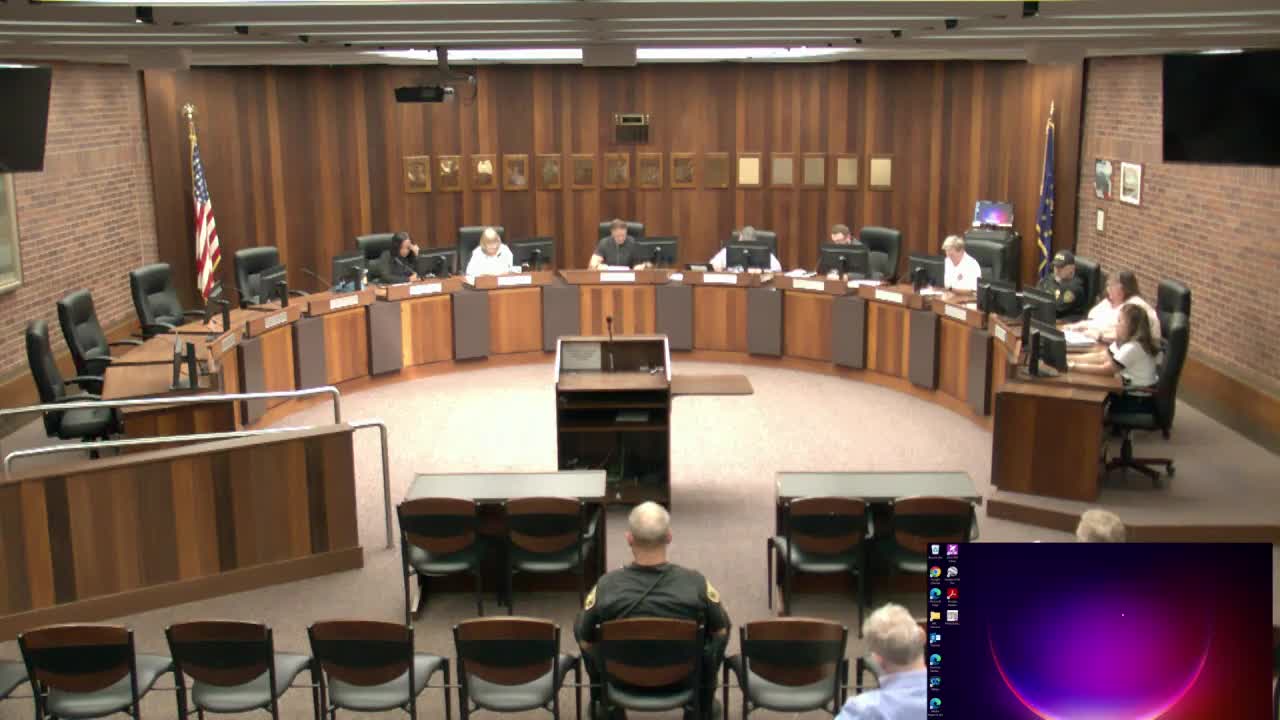Historic-district group urges speed tables, limits on heavy trucks as Riverside work continues
October 08, 2025 | Evansville City, Vanderburgh County, Indiana
This article was created by AI summarizing key points discussed. AI makes mistakes, so for full details and context, please refer to the video of the full meeting. Please report any errors so we can fix them. Report an error »

Members of the Old Evansville Historic Association and longtime residents urged the City of Evansville Board of Public Safety on Wednesday to pursue traffic-calming measures and to reexamine allowances for heavy trucks on Riverside Drive as reconstruction proceeds.
Amy Hayden, co‑president of the Old Evansville Historic Association (OHA), told the board that the neighborhood is seeking four speed tables placed along Riverside Drive to slow traffic, improve pedestrian and bicycle crossings and prevent future damage to the riverfront’s aging infrastructure. “It is a safety issue, definitely a quality of life issue,” Hayden said, noting the area’s pedestrian destinations such as the Museum, Riverwalk and parks.
Resident Chuck Hudson described recurring heavy truck traffic through the historic district, saying posted no‑truck weight limits along the riverfront had been widely ignored. Hudson said that fully loaded dump trucks and semis have been using the riverfront and cutting through adjacent historic streets during construction detours, increasing the risk of further pavement collapses in areas he described as “sandy mush.”
Hudson asked the board to support reexamining any company exceptions that had allowed heavy vehicles to use the riverfront. He also suggested placing an initial speed table at the reconstructed Chestnut and Riverside intersection once the current work is finished. “The truck traffic, unfettered on the riverfront and now through the historic district, I think is gonna become a bigger problem,” Hudson said.
Board members advised the presenters to work with the city engineer and traffic engineering, and the counsel on the panel noted that a formal feasibility study and speed analyses are typically required to justify speed tables and document impacts such as drainage changes. One board member said the item will be kept on future agendas while staff consults with traffic engineering and the Board of Public Works about which body has authority for installed traffic-calming elements tied to roadway reconstruction.
Speakers cited research suggesting typical speed reductions to about 25–27 miles per hour between tables and crash-rate reductions for treated streets. Hayden recommended wide tables (about six feet) that could also serve as pedestrian and bicycle crossings. Hudson said enforcement alone was insufficient and that physical measures would reduce heavy‑vehicle volumes and protect aging infrastructure.
No formal vote or ordinance change occurred at the meeting; the board’s action was to request staff follow up with traffic engineering and return with options and feasibility information at a future meeting.
Amy Hayden, co‑president of the Old Evansville Historic Association (OHA), told the board that the neighborhood is seeking four speed tables placed along Riverside Drive to slow traffic, improve pedestrian and bicycle crossings and prevent future damage to the riverfront’s aging infrastructure. “It is a safety issue, definitely a quality of life issue,” Hayden said, noting the area’s pedestrian destinations such as the Museum, Riverwalk and parks.
Resident Chuck Hudson described recurring heavy truck traffic through the historic district, saying posted no‑truck weight limits along the riverfront had been widely ignored. Hudson said that fully loaded dump trucks and semis have been using the riverfront and cutting through adjacent historic streets during construction detours, increasing the risk of further pavement collapses in areas he described as “sandy mush.”
Hudson asked the board to support reexamining any company exceptions that had allowed heavy vehicles to use the riverfront. He also suggested placing an initial speed table at the reconstructed Chestnut and Riverside intersection once the current work is finished. “The truck traffic, unfettered on the riverfront and now through the historic district, I think is gonna become a bigger problem,” Hudson said.
Board members advised the presenters to work with the city engineer and traffic engineering, and the counsel on the panel noted that a formal feasibility study and speed analyses are typically required to justify speed tables and document impacts such as drainage changes. One board member said the item will be kept on future agendas while staff consults with traffic engineering and the Board of Public Works about which body has authority for installed traffic-calming elements tied to roadway reconstruction.
Speakers cited research suggesting typical speed reductions to about 25–27 miles per hour between tables and crash-rate reductions for treated streets. Hayden recommended wide tables (about six feet) that could also serve as pedestrian and bicycle crossings. Hudson said enforcement alone was insufficient and that physical measures would reduce heavy‑vehicle volumes and protect aging infrastructure.
No formal vote or ordinance change occurred at the meeting; the board’s action was to request staff follow up with traffic engineering and return with options and feasibility information at a future meeting.
View the Full Meeting & All Its Details
This article offers just a summary. Unlock complete video, transcripts, and insights as a Founder Member.
✓
Watch full, unedited meeting videos
✓
Search every word spoken in unlimited transcripts
✓
AI summaries & real-time alerts (all government levels)
✓
Permanent access to expanding government content
30-day money-back guarantee

